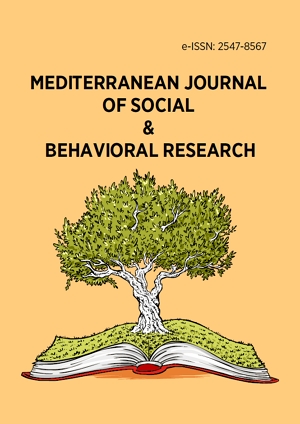Research Article
Quality and Cost/Benefit Analysis of Distance Education: A Case Study at Karadeniz Technical University
More Detail
1 Distance Education Research and Application Center Karadeniz Technical University, Trabzon, Turkey* Corresponding Author
Mediterranean Journal of Social & Behavioral Research, 1(1), July 2017, 22-29
Published: 01 July 2017
OPEN ACCESS 1603 Views 875 Downloads
ABSTRACT
Karadeniz Technical University Distance Education Research and Application Center (KTUDERAC) has 5 Master Degree Program, 2 Graduate Program and 4 courses with approximately 20.000 students. Quality and cost in distance education have been considered and evaluated by university and Higher Education Institution. Quality and cost analysis studies are held on yearly and distance education policies are composed and shaped regarding results. At this study, quality and cost analyze studies between September 2010 and June 2014. Problems, achievements, benefits and strategies are detailed and presented with changes over time. Student’s success, comfort, expectations, supports; instructors’ performance, comfort, expectations, supports; university management’s expectations, KTU-DERAC staffs’ performance, comfort, expectations are regarded for analyzing quality. Cost/ Benefit analyses has been made regarding budget, expenses, investments over the years. Quality and cost/benefit relation is also discussed at this study. Results of study showed that experiences, investments, student’s and instructors’ comfort and expectations are key factors for success of distance education.
CITATION (APA)
Berigel, M. (2017). Quality and Cost/Benefit Analysis of Distance Education: A Case Study at Karadeniz Technical University. Mediterranean Journal of Social & Behavioral Research, 1(1), 22-29.
REFERENCES
- Antony S & Gnaam A (2004). Quality assurance in distance education: The challenges to be Addressed. Higher Education 47, 143–160.
- Bates, T. (2011). Outlook for online learning and distance education. Retrieved August 31, 2014, from http://provost.ncsu.edu/governance/task-forces/distance-education/2011/documents/2011-outlook-for-online-learning-and-de.pdf
- Berge, Z. L., Muilenburg, L. Y., & Haneghan, J. V. (2002). Barriers to distance education and training: Survey results. Quarterly Review of Distance Education, 3(4), 409–419.
- Clarke, M., Butler, C., Schmidt‐Hansen, P., & Somerville, M. (2004). Quality assurance for distance learning: A case study at Brunel University. British Journal of Educational Technology, 35(1), 5-11.
- Marshall, S. & Mitchell, G. (2006). Assessing sector e-learning capability with an e-learning maturity model. In Proceedings of the Association for Learning Technologies Conference, Edinburgh, UK.
- Quilter, S. & Weber, R. (2004). Quality assurance for online teaching in higher education: considering and identifying best practice for e-Learning. International Journal on E-Learning. 3(2), 64-73.
- Wang, Q. (2006). Quality assurance: Best practices for assessing online programs. International Journal on ELearning, 5(2) 265–274.

 The articles published in this journal are licensed under the CC-BY Creative Commons Attribution International License.
The articles published in this journal are licensed under the CC-BY Creative Commons Attribution International License.